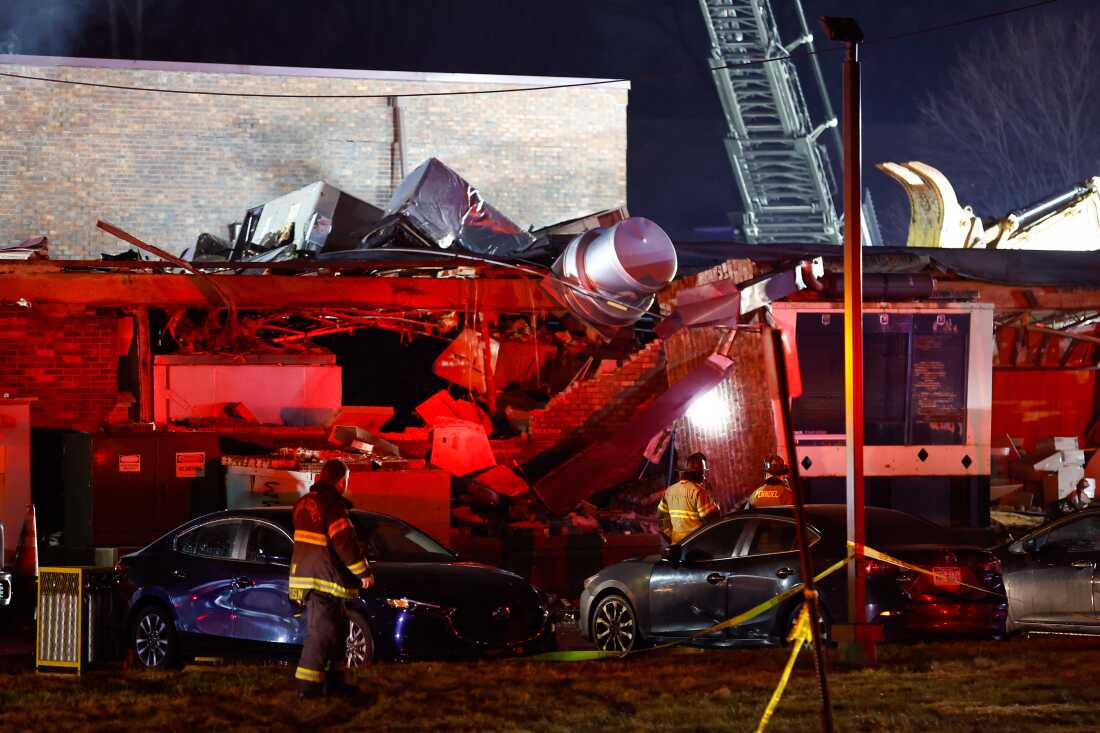News
Rudy Giuliani apartment transfer is “very strange”—legal analyst

A judge’s decision to transfer Rudy Giuliani’s apartment to two election workers is highly unusual, a legal analyst has told Newsweek.
Greg Germain, a law professor at Syracuse University in New York, was reacting to Judge Lewis Liman’s order that the former New York mayor must transfer his Manhattan apartment to a receivership set up for two election workers he wrongly accused of election fraud. The apartment, at 45 East 66th Street, is worth about $6 million.
Giuliani accused Freeman and Moss of committing election fraud as ballot counters in Fulton County, Georgia. He circulated an edited clip of security footage that he wrongly claimed showed them passing USB drives. Moss and Freeman sued for defamation, and in December, a Washington, D.C., jury awarded them $148 million.
On Tuesday, Liman ordered that Giuliani, a former lawyer for former President Donald Trump, has one week to transfer the lease to a New York City apartment, a car and other property to the receivership.
The former New York City mayor was ordered to pay Ruby Freeman and her daughter, Shaye Moss, more than $148 million in damages for comments he made undermining the 2020 election results.
Newsweek sought email comment from Giuliani’s spokesman on Wednesday.
Michael M. Santiago/Getty Images
“The court appointed the plaintiffs to act as receiver, something I’ve not seen done before,” Germain said.
“Frankly, I think it’s very strange for an adverse party to serve as a receiver. The court says that New York law permits the court to appoint the plaintiffs as receiver, but the judge did not cite any authority for that proposition.”
“While it looks like the judge is ordering the turnover of Giuliani’s cooperative apartment and other personal property to the plaintiffs, he’s really ordering the turnover to the plaintiffs as a receiver to sell the property and apply the proceeds to the judgment,” Germain added.
“The judge suggests that a receiver is more appropriate than the sheriff to sell the property because it’s specialized property that may result in higher sales prices by being marketed for private sales rather than a typical sheriff auction. According to the order, Giuliani agreed to the use of a receiver, although I don’t know if he agreed that the plaintiffs would act as a receiver,” Germain said.
“I will always have to be careful about where I go and who I will be able to share my name with,” Freeman told reporters after winning the defamation case in December. “I miss my name.”
In addition to the apartment, Giuliani has seven days to transfer all rights he has in the $2 million Trump owes him for legal services; cash in his bank account; a 1980 Mercedes-Benz SL500 that was once owned by actress Lauren Bacall; a signed Joe DiMaggio shirt; and more than 20 expensive watches.

News
U.S. and Ukraine reach consensus on key issues aimed at ending the war

Ukraine’s President Volodymyr Zelenskyy speaks during a media conference at the EU Summit in Brussels, Thursday, Dec. 18, 2025.
Geert Vanden Wijngaert/AP
hide caption
toggle caption
Geert Vanden Wijngaert/AP
KYIV, Ukraine — The United States and Ukraine have reached a consensus on several critical issues aimed at bringing an end to the nearly four-year conflict, but sensitive issues around territorial control in Ukraine’s eastern industrial heartland, along with the management of the Zaporizhzhia nuclear power plant, remain unresolved, Ukraine’s president said.

Volodymyr Zelenskyy spoke as the U.S. showed the 20-point plan, hammered out after marathon talks in Florida in recent days, to Russian negotiators. A response is expected from Moscow on Wednesday, Zelenskyy said.
The Ukrainian president briefed journalists on each point of the plan on Tuesday. His comments were embargoed until Wednesday morning. The draft proposal, which reflects Ukraine’s wishes, intertwines political and commercial interests to safeguard security while boosting economic potential.
At the heart of the negotiations lies the contentious territorial dispute concerning the Donetsk and Luhansk regions, known as the Donbas. This is “the most difficult point,” Zelenskyy said. He said these matters will be discussed at the leaders level.
Russia continues to assert maximalist demands, insisting that Ukraine relinquish the remaining territory in Donbas that it has not captured — an ultimatum that Ukraine has rejected. Russia has captured most of Luhansk and about 70% of Donetsk.
In a bid to facilitate compromise, the United States has proposed transforming these areas into free economic zones. Ukraine insists that any arrangement must be contingent upon a referendum, allowing the Ukrainian people to determine their own fate. Ukraine is demanding the demilitarization of the area and the presence of an international force to ensure stability, Zelenskyy said.
How the Zaporizhzhia nuclear power plant, the largest plant in Europe which is under Russian occupation, will be managed is another contentious issue. The U.S. is proposing a consortium with Ukraine and Russia, with each party having an equal stake in the enterprise.
But Zelenskyy countered with a joint venture proposal between the U.S. and Ukraine, in which the Americans are able to decide how to distribute their share, presuming it would go to Russia.
“We did not reach a consensus with the American side on the territory of the Donetsk region and on the ZNPP,” Zelenskyy said, referring to the power plant in Zaporizhzhia. “But we have significantly brought most of the positions closer together. In principle, all other consensus in this agreement has been found between us and them.”
A free economic zone compromise
Point 14, which covers territories that cut across the eastern front line, and Point 12, which discusses management of the Zaporizhzhia plant, will likely be major sticking points in the talks.
Zelenskyy said: “We are in a situation where the Russians want us to leave the Donetsk region, and the Americans are trying to find a way so that it is ‘not a way out’ — because we are against leaving — they want to find a demilitarized zone or a free economic zone in this, that is, a format that can provide for the views of both sides.”
The draft states that the contact line, which cuts across five Ukrainian regions, be frozen once the agreement is signed.
Ukraine’s stance is that any attempt to create a free economic zone must be ratified by a referendum, affirming that the Ukrainian people ultimately hold the decision-making power, Zelenskyy said. This process will require 60 days, he added, during which time hostilities should stop to allow the process to happen.

More difficult discussions would require hammering out how far troops would be required to move back, per Ukraine’s proposal, and where international forces would be stationed. Zelenskyy said ultimately “people can choose: this ending suits us or not,” he said.
The draft also proposes that Russian forces withdraw from Dnipropetrovsk, Mykolaiv, Sumy, Kharkiv regions, and that international forces be located along the contact line to monitor the implementation of the agreement.
“Since there is no faith in the Russians, and they have repeatedly broken their promises, today’s contact line is turning into a line of a de facto free economic zone, and international forces should be there to guarantee that no one will enter there under any guise — neither ‘little green men’ nor Russian military disguised as civilians,” Zelenskyy said.
Managing Zaporizhzhia power plant
Ukraine is also proposing that the occupied city of Enerhodar, which is connected to the Zaporizhzhia power plant, be a demilitarized free economic zone, Zelenskyy said. This point required 15 hours of discussions with the U.S., he said.
For now, the U.S. proposes that the plant be jointly operated by Ukraine, the U.S. and Russia, with each side receiving dividends from the enterprise.
“The USA is offering 33 percent for 33 percent for 33 percent, and the Americans are the main manager of this joint venture,” he said. “It is clear that for Ukraine this sounds very unsuccessful and not entirely realistic. How can you have joint commerce with the Russians after everything?”
Ukraine offered an alternative proposal, that the plant be operated by a joint venture with the U.S. in which the Americans can determine independently how to distribute their 50 percent share.
Zelenskyy said billions in investments are needed to make the plant run again, including restoring the adjacent dam.
“There were about 15 hours of conversations about the plant. These are all very complex things.”
A separate annex for security guarantees
The document ensures that Ukraine will be provided with “strong” security guarantees that mirror NATO’s Article 5, which would obligate Ukraine’s partners to act in the event of renewed Russian aggression.
Zelenskyy said that a separate bilateral document with the U.S. will outline these guarantees. This agreement will detail the conditions under which security will be provided, particularly in the event of a renewed Russian assault, and will establish a mechanism to monitor the ceasefire.
This mechanism will utilize satellite technology and early warning systems to ensure effective oversight and rapid response capabilities.
“The mood of the United States of America is that this is an unprecedented step towards Ukraine on their part. They believe that they are giving strong security guarantees,” he said.
The draft contains other elements including keeping Ukraine’s army at 800,000 during peace time, and by nailing down a specific date for ascension to the European Union.
Elections and boosting the economy
The document proposes accelerating a free trade agreement between Ukraine and the U.S. once the agreement is signed. The U.S. wants the same deal with Russia, said Zelenskyy.
Ukraine would like to receive short-term privileged access to the European market and a robust global development package, that will cover a wide-range of economic interests, including a development fund to invest in industries including technology, data centers and artificial intelligence, as well as gas.
Also included are funds for the reconstruction of territories destroyed in the war.
“Ukraine will have the opportunity to determine the priorities for distributing its share of funds in the territories under the control of Ukraine. And this is a very important point, on which we spent a lot of time,” Zelenskyy said.
The goal will be to attract $800 billion through equity, grants, loans and private sector contributions.
The draft proposal also requires Ukraine to hold elections after the signing of the agreement. “This is the partners’ vision,” Zelenskyy said.
Ukraine is also asking that all prisoners since 2014 be released at once, and that civilian detainees, political prisoners and children be returned to Ukraine.
News
A 3-D Look Inside Trump’s Revamped Oval Office

Mr. Trump spends a great deal of his public and private time in the Oval Office. Here, he fields phone calls from allies, hosts hourslong staff meetings and takes questions from reporters while cameras roll.
It’s not unusual for presidents to decorate the space to their own tastes. They often choose art or items meant to evoke meaning and a historical connection to past political eras.
But in his second term, Mr. Trump has placed a connection to his lavish decorating style above all else. His tastes veer toward the gilded, triumphal style of Louis XIV, a theme that shows up in his own properties.
Mr. Trump has regularly added to or swapped out items in the Oval, according to Karoline Leavitt, the White House press secretary. Some of Mr. Trump’s changes go beyond the decorative — he has installed a red button on his desk that lets him instantly order a Diet Coke.
Most objects on the walls are from the White House archive. But a few things, including gold angel statuettes placed above two of the doorways, were brought in from Mar-a-Lago, his estate in Palm Beach, Fla.
Donna Hayashi Smith, the White House curator, and several members of her team spend time pulling portraits and other items from an archive to show Mr. Trump for approval. The president has also traveled to a vault below the White House to see items in person before choosing to display them in the Oval, Ms. Leavitt said.
Mr. Trump was recently shown a portrait of the former first lady Jacqueline Kennedy, which now hangs near the fireplace. Ms. Leavitt said the president added this portrait, the only one of a woman in the office, because he “admires” Mrs. Kennedy.
The Oval Office makeover is among the many changes Mr. Trump has ordered at the White House, including paving the Rose Garden, remodeling the Lincoln bathroom and demolishing the East Wing to build a massive ballroom.
The Golden Stage
Why all the gold?
“He’s a maximalist,” Ms. Leavitt said, citing Mr. Trump’s background in real estate and hospitality. “So he loves showing people who come in, the renovations, his office, his gift shop.”
She added that when traveling overseas, Mr. Trump proudly talks about the White House to world leaders as he invites them to visit him in Washington. “This is the people’s house. It is also the epicenter of the world,” Ms. Leavitt said. “And he genuinely does have a great respect for the White House.”
Almost as soon as he took office, Mr. Trump began adding gold accents to the Oval. By his first bilateral meeting, with Prime Minister Benjamin Netanyahu of Israel in February, there were five gold-framed portraits surrounding the fireplace and nine gold antiques on the mantel. By his October meeting with President Alexander Stubb of Finland, the gold had proliferated.
Mr. Trump also added ornately framed mirrors on two doors leading to other parts of the West Wing. One of them, shown below, covers a peephole where the president’s aides have, in the past, looked through to monitor the progress of meetings.
Now, if the door is closed, they can no longer see what is happening inside the Oval.
The sheer amount of gilded appliqués on the walls of the Oval Office has sparked internet rumors that they are plastic furnishings purchased from Home Depot, painted in gold. Mr. Trump has denied those claims, saying that the appliqués are authentic gold.
A White House official, speaking on the condition of anonymity to describe the process, said that the underlying materials are made of plaster or metal, then covered with real gold leaf. A craftsman from Florida regularly travels to Washington to gild the appliqués by hand, often when the president is away on the weekends, that official said.
Gold is a metaphor the president uses to visually show his success, said Robert Wellington, an art historian at the Australian National University and author of “Versailles Mirrored: The Power of Luxury, Louis XIV to Donald Trump.”
“He’s really setting up a kind of stage — a gilded stage for his presidency,” Mr. Wellington said. “His style is to amass things together to make this look of ‘rich.’ ”
Aside from the gold, Mr. Trump has hung more than 20 portraits in the Oval Office. In addition to Mr. Washington’s above the fireplace, portraits of John Adams, Benjamin Franklin, Andrew Jackson, William Henry Harrison, Abraham Lincoln, James Monroe and Franklin D. Roosevelt are also on the walls.
Mr. Trump has ruminated about the fate of Mr. Harrison, who died shortly after he was inaugurated, to people who have visited the Oval Office. He has said that the portraits of his predecessors are there to remind him of how quickly fate can change.
Most other presidents had just a few portraits or scenery paintings in the Oval.
George W. Bush, June 2005
Barack Obama, October 2014
Even the lighting in the Oval has not gone untouched.
During his first term, Mr. Trump had lights replaced in the Oval to make sure he was better lit during televised appearances.
Now, between the gold and the overhead lights, the room is very bright. The president has recently discussed installing chandeliers, a White House official said.
The Resolute Desk
In this space, Mr. Trump has ceremonies, like awarding medals to the Kennedy Center honorees or the 1980 Olympic hockey team. He has also hosted business leaders, like Apple’s Tim Cook, or other politicians, like New York City’s mayor-elect Zohran Mamdani.
Mr. Trump has recently taken to sitting at the Resolute Desk while people stand behind him at events.
Other presidents have used the Oval Office in a more structured, organized way than Mr. Trump does.
President Joseph R. Biden Jr. used it as a space for briefings with his staff; the list of attendees was tightly controlled by his senior aides. President Barack Obama often arrived at the office in the late morning, worked there until dinner and continued his evening working in the executive residence. President George W. Bush would reach the Oval by early morning, and in the days and months after the Sept. 11, 2001, terror attacks, the office became the backdrop of some of his most significant national addresses.
Mr. Trump treats the Oval Office as something akin to a boardroom or center stage. His most loyal aides are often in the room with him, helping workshop social media posts or fetching documents at his request. Meetings often run long, and sometimes get folded into unrelated events, because the president enjoys looping in more people as the day goes on.
One day this month, Mr. Trump welcomed a conga line of reporters, political allies and at least one cabinet secretary for meetings. He took phone calls and diverted to other subjects, including his plans for the East Wing ballroom. By the end of the day, he was several hours behind his official schedule, according to a person familiar with his schedule.
Smaller details in the Oval Office were still in the works recently. A gold statuette of an eagle flying over the Constitution was added last month near the flags behind the desk.
But Mr. Trump is most likely finished putting up new items, Ms. Leavitt said.
The Oval Office in 360
Tap and drag the image to explore on your own.
Additional photo credits:
George Washington portraits above the fireplace: White House Historical Association (Richard Nixon, Gerald Ford and Ronald Reagan administrations); Everett Collection, via Alamy (Jimmy Carter administration)
Photo of gold coasters and Diet Coke button: Doug Mills/The New York Times
Gifts to Trump: Doug Mills/The New York Times (plaque from Apple); Tom Brenner for The New York Times (FIFA Peace Prize trophy); Eric Lee/The New York Times (Washington Commanders football); Doug Mills/The New York Times (Rolex desk clock)
News
Explosion at a Pennsylvania nursing home kills at least 2, governor says

First responders work at the scene of an explosion and fire at Bristol Health & Rehab Center on Tuesday in Bristol, Pa.
Monica Herndon/The Philadelphia Inquirer/AP
hide caption
toggle caption
Monica Herndon/The Philadelphia Inquirer/AP
BRISTOL, Pa. — A thunderous explosion Tuesday at a nursing home just outside Philadelphia killed at least two people, collapsed part of the building, sent fire shooting out and left people trapped inside, authorities said.
Pennsylvania Gov. Josh Shapiro said in a news conference several hours after the explosion that at least two had been killed after emergency responders braved the flames and a heavy odor of gas to evacuate residents and employees.
Fire officials said they were in “rescue mode” five hours later, with responders still digging by hand and using search dogs and sonar to locate potential victims.
The explosion happened at Bristol Health & Rehab Center in Bristol Township, just as a utility crew had been on site looking for a gas leak.
A plume of black smoke rose from the nursing home, as emergency responders, fire trucks and ambulances from across the region rushed there, joined by earthmoving equipment.
Authorities did not identify those who died and did not know the total number of those injured after residents and employees were evacuated to hospitals.

Shapiro asked his fellow Pennsylvanians to take a moment to pray “for this community, for those who are still missing, for those who are injured, and for those families who are about to celebrate Christmas with an empty chair at their table.”
The town’s fire chief, Kevin Dippolito, said at the Tuesday evening news conference that there were five people still unaccounted for, but he cautioned that some may have left the scene with family members.
Dippolito described a chaotic rescue where firefighters found people stuck in stairwells and elevator shafts, and pulled residents out of the fiery building through windows and doors.

Emergency personnel work at the scene of an explosion and fire at Bristol Health & Rehab Center on Tuesday in Bristol, Pa.
Monica Herndon/The Philadelphia Inquirer/AP
hide caption
toggle caption
Monica Herndon/The Philadelphia Inquirer/AP
They handed off patients to waiting police officers outside, including one “who literally threw two people over his shoulders,” Dippolito said. “It was nothing short of extraordinary.”
Bucks County emergency management officials said they received the report of an explosion at approximately 2:17 p.m. and said a portion of the building was reported to have collapsed.
Willie Tye, who lives about a block away, said he was sitting at home watching a basketball game on TV when he heard a “loud kaboom.”
“I thought an airplane or something came and fell on my house,” Tye said.
He got up to go look and saw “fire everywhere” and people escaping the building. The explosion looked like it happened in the kitchen area of the nursing home, he said. Tye said some of the people who live or work there didn’t make it out.
“Just got to keep praying for them,” Tye said.
Shapiro said a finding that the gas leak caused the explosion was preliminary.
The local gas utility, PECO, said its crews had responded to reports of a gas odor at the nursing home shortly after 2 p.m.
“While crews were on site, an explosion occurred at the facility. PECO crews shut off natural gas and electric service to the facility to ensure the safety of first responders and local residents,” the utility said in a statement.
Nils Hagen-Frederiksen, press secretary at the Pennsylvania Public Utility Commission, said investigators from the safety division were headed to the scene. Finding that the explosion was caused by a gas leak won’t be confirmed until his agency can examine the scene up close, he said.
Musuline Watson, who said she was a certified nursing assistant the facility, told WPVI-TV/ABC 6 that, over the weekend, she and others there smelled gas, but “there was no heat in the room, so we didn’t take it to be anything.”


The 174-bed nursing home is about 20 miles (32 kilometers) northeast of Philadelphia. Its owner, Saber Healthcare Group, said it was working with local emergency authorities. The facility had been known until recently as Silver Lake Healthcare Center.
The latest state inspection report for the facility was in October and the Pennsylvania Department of Health found that it was not in compliance with several state regulations.
The inspection report said the facility failed to provide an accurate set of floor plans and to properly maintain several stairways, including storing multiple paint buckets and a bed frame under landings.
It also said the facility failed to maintain portable fire extinguishers on one of the three levels and failed to provide the required “smoke barrier partitions,” which are designed to contain smoke on two floors. It also said it didn’t properly store oxygen cylinders on two of three floors.
According to Medicare.gov, the facility underwent a standard fire safety inspection in September 2024, during which no citations were issued. But Medicare’s overall rating of the facility is listed as “much below average,” with poor ratings for health inspections in particular.
-

 Iowa1 week ago
Iowa1 week agoAddy Brown motivated to step up in Audi Crooks’ absence vs. UNI
-

 Maine1 week ago
Maine1 week agoElementary-aged student killed in school bus crash in southern Maine
-

 Maryland1 week ago
Maryland1 week agoFrigid temperatures to start the week in Maryland
-

 New Mexico1 week ago
New Mexico1 week agoFamily clarifies why they believe missing New Mexico man is dead
-

 Detroit, MI1 week ago
Detroit, MI1 week ago‘Love being a pedo’: Metro Detroit doctor, attorney, therapist accused in web of child porn chats
-

 Health1 week ago
Health1 week ago‘Aggressive’ new flu variant sweeps globe as doctors warn of severe symptoms
-

 Massachusetts1 week ago
Massachusetts1 week agoMIT professor Nuno F.G. Loureiro, a 47-year-old physicist and fusion scientist, shot and killed in his home in Brookline, Mass. | Fortune
-

 Maine1 week ago
Maine1 week agoFamily in Maine host food pantry for deer | Hand Off























